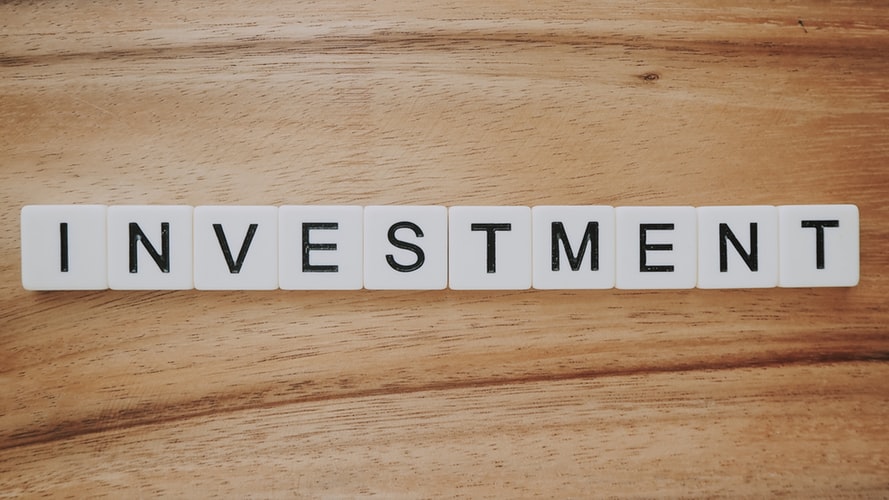Complete Guide on How To Find Your Perfect SaaS Investors And Create A Winning Pitch in 2021

Complete Guide on How To Find Your Perfect SaaS Investors And Create A Winning Pitch in 2021
Do you admit that your potential SaaS investors are like your potential customers?
- Not all investors are equal: you should target the right ones who are interested in investing in SaaS and tend to fund in your geography & startup stage. You should target the right users too as not everyone is your ideal prospect.
- Investors require research: before contacting any investor, you should learn as much as you can about them. The same you do while creating your buyer personas.
- Copies matter: how you address both your potential investors and customer is of paramount importance. You should know how to create a message that will convert and make them say Yes to a meeting or signing a deal with you.
We won’t spend time on revealing more similarities or difference because we have something more practical for you. In a nutshell, we are going to discover
#1 What types of SaaS investors exist,
#2 In which startup stages they invest,
#3 Where to find your angels and VC’s,
#4 What information potential investors expect from you,
#5 How to design an attractive message and pitch deck.
If you are willing to increase response rates and attend face-to-face meetings with your potential investors, don’t hesitate to move to our next section.
First, angel investor or VC? What makes them different?
Angel investors… The word “angel” is not a random adjective here. A person who agrees to invest in a risky early-stage business with no final product and customers, is probably an angel. So, funding pre-revenue businesses is the first characteristic. Allocated funds aren’t so big, usually 5-6 digit numbers.
Another attribute is that SaaS angel investors are usually rich people who offer their private financial resources.
Besides, they can personally become involved in your business activities, help you with advice and provide mentorship.
Angel investors usually get 5-15% of your company equity.
Venture capitalists can allocate up to tens of millions of dollars. Their investments are less risky because they work with startups who have high growth potential or previously have demonstrated high results.
Venture capitalists may get 20-30% of your company equity.
Second, which stage is your startup in?
One of the most essential elements of finding the right investor is to know in which stage your startup is. If you search startup stages on Google or Youtube, you will come up with dozens of confusing & complex classifications. To make your life easy and simple, let’s see which stage suits your current situation best:
- Idea – You already guess, in this stage your startup is only on your mind. No team, no product, no revenue (and no investors). You spot problems that users face online and want to react with an unprecedented solution.
- Pre-seed – If you work on your ideas and are ready to develop a specific product, you reach the second stage. You already can’t do without funding. You, your friends and family members are the ones who support you financially (bootstrapping). Sometimes early-stage angel investors can also back you up. And startup accelerators too.
- Seed – Finally, you have a proof of concept. Your MVP (Minimum Viable Product) is there and you are able to get feedback from your initial users & testers. Your revenue in this stage may or may not exist but both angel investors and early VC’s are likely to show interest in your company.
- A round – Angel investors are less involved in this stage and you should focus on venture capitalists. You have developed a working product which has proof of concept, some traction and maybe some revenue.
- B round – You just left angel investors behind. In this stage, you try to raise funding that is 7-8 digit, so VC’s are the ones you should look for. You start generating revenue and traction increases.
- C round – Are you the winner of your niche or compete to gain that title? Congratulations, you are among 8% of startups who didn’t fail in the first 3 years of their existence.
Free download Inbound Marketing Best Practices To Increase SaaS Sales
Third, where to look for potential SaaS investors?
Online sources
If you type “venture capitalist” on LinkedIn, you will get 15,000+ results. If you type “angel investor”, you will get 270,000+. These numbers are good, but it’s quite time-consuming to browse their profiles and see in which industries they prefer to invest.
To provide you with more organized data, we want to introduce 3 platforms where you can get access to large databases of potential SaaS angel investors.
AngelList – This American website is a place for startups and angel investors to meet. You list your company and provide details, investors in their turn share information about themselves: investments, experience, industry, etc. You should filter your potential partners by region because investors residing in Europe will be more interested in working with local businesses.
Angel investment network – Another platform where you can register, add your pitch, and connect with investors. You can find info on how much $ an investor is ready to provide, what’s his area of expertise, and location. Don’t forget to choose your country too in order to get more relevant investor options.
Gust.com – This is another network with 80,000 investment professionals. You sign in with your startup, receive recommendations, and apply for SaaS investment opportunities with your profile.
YCombinator – No matter what startup stage you are in, you can submit an application on this network. They have two rounds or batches per year and can fund startups from all over the world. Learn more about the next application process here.
If you are interested in SaaS venture capital, you can check out websites like SaaStr Fund, PointNine, Accel, 500 Startups. They are specialized in the tech industry, having been funded famous software companies like Slack, Spotify, Intercom, etc.

Offline sources! Meet them at a conference
Tech conferences abroad can be expensive (and they are) but think about the benefits fairly. You attend an event where people have one goal: expand their network. You are among potential investors who voluntarily come to learn about your vision. Physical presence, tete-a-tete conversation and the perfect environment.
Want to know the truth? If you are an extrovert who excels at building
relationships, conferences are just a super option. But if you don’t have the courage to approach an investor in a crowded place, you should find someone to accompany you.
Let’s see which conferences are worth attending.
- SaaStock – Is organized in Europe, North America, Latin America, and Australia. Brings together 4,000 SaaS founders, executives, and Investors to discuss SaaS growth opportunities & trends.
- Web summit – Is organized in Lisbon, Portugal. Over 70,000 participants come together, including journalists, startup founders, CEOs of world-famous companies, and of course influential investors.
- SaaStr – Organized in Europe and USA, SaaStr is a place where 15,000 attendees meet. Mentoring sessions, VCs, CEOs, founders, and executives. Here’s what to expect.
- LTV conference – Organized in North America, LTV conference promises that you will meet angel, VC and private equity firm reps, learn about bootstrapping & getting funds.
Keep reading because our first contributor, a SaaS company founders shares his story of reaching out investors and getting to “Yes”.
Carsten Schaefer
Founder and CEO at crowdy.ai

“Before setting up my own SaaS company, I ran a development and software consulting agency that worked with clients all over the world.
When I realized that there was a potential in setting up a specialized SaaS for social proof as a marketing tool, I crunched the numbers and found out that I will need funding.
The first people I reached out to were customers and partners from my development agency, people that knew how I worked and the quality of work I provided. I had no problems securing my first round of investments through just a few phone calls.
Therefore, my recommendation for getting your first funding is to reach out to previous clients, customers and partners that know you and your work. They are the most likely to give you a helping hand and invest in your cause.”
Fourth, how to guarantee a response (and increase chances for success)?
Since you have already selected some candidates with whom you’d like to work, let’s see what factors you should consider.
- Dig into your potential investor’s social media / AngelList profiles – AngelList publicly shows in what companies X entrepreneur made investments, what’s his position, etc. Needless to say how much useful info you can find on LinkedIn, Twitter and other public channels. Analyze what kind of posts your potential partners share, what they are interested in. Both you and he will benefit if you are a good match. Investors hate when you are unaware of their interests and your only goal is to convince how great you are. So spare a few hours to discover how feasible is your future partnership.
- Get an introduction – Here word-of-mouth plays as significant role as in the customer acquisition process. If your potential investor learns about you from a trustworthy source or a mutual connection organizes a meeting between you, your chances of winning the game increase. When you say “My product and team are different. Do business with me. Our customer support is second to none”, that will result in some positive reaction. But when an influencer or a previous customer confirms it, people react differently and trust you more. The same rule works in potential investor-SaaS founder relationship.
- Your SaaS pitch deck should be max 15 slides – Pitch deck refers to a presentation which is not in PPT or PDF format. Try to choose a more professional service. In your 10-15 slides, you are encouraged to include a) Problem, b) Solution, c) Market size (small niches usually don’t attract investors), d) Business model (how you are going to make money) e) Unique selling point, f) Team (mention those members who will be dedicated in the long run). Investors also don’t like to see product screenshots: please make your presentation perfect with a real product demo!
Here Lilia Stoyanov tells you what metrics investors care most:
Lilia Stoyanov
CEO at Transformify, Angel Investor

“SaaS companies are somewhat privileged when to comes to raising funding. Most investors like the predictability of cash flows that comes with a subscription model. However, to secure funding SaaS founders need to demonstrate that the company is hitting some critical KPIs.
These include:
(i) Recurring Revenue
It is expected that clients have used the product or services for at least three consecutive months. This demonstrates their willingness to pay, their loyalty and client satisfaction.
(ii) Low Churn Rate
The Churn Rate is the percentage of customers who have stopped using the product, and hence, have stopped paying for it. It is usually calculated on a monthly, quarterly and yearly basis. The lower the churn rate, the better as this proves that the product is viable, and the clients are ready to pay for it in the long run.
(iii) Low CPA (Cost Per Acquisition)
Demonstrating a growing customer base is fantastic but it may come at a cost that the business can’t bear. Inefficient marketing campaigns normally incur lots of costs and bring few customers.
Hence, the cost per acquisition / CPA is high and this is not favoured by investors.
They are looking for disruptive marketing campaigns and growth hacking tactics that can scale the business fast while keeping the CPA low.”
Was it helpful? See one of her articles on Entrepreneur and let’s quickly move to our 5th section!
Fifth, what’s the ideal communication channel to contact an investor?

That’s certainly not text messages, Facebook or even phone calls. Don’t cross personal boundaries. These options are generally designed for private conversations. So if you don’t have initial permission, you wouldn’t like to disturb those busy people.
Like mentioned before, N1 way to interact with an investor is to get an introduction from a mutual friend. N2 way is to attend tech & SaaS events and meet angels or VC’s in person. If none of them is applicable, let’s consider other options.
#1 Email – Email is more or less formal way to connect for business purposes. And 90% of your success depends on your email copy (like if you tried to close a customer). Your subject line shouldn’t be something like “Are you willing to fund?”. You can write more promising headlines like “X dollar SaaS seeking for VC”. Your email message usually includes a short message and your pitch deck.
#2 Linkedin – Users regard LinkedIn like the largest professional network. And that’s OK if you don’t find the investor’s email address and contact him via this platform. Again think of a concise, but informative message that will instantly grab the reader’s attention (2-3 paragraphs).
#3 Another social media channel – Well, if your investor’s email address and LinkedIn profiles are missing, then Facebook, Twitter, Instagram can give you a helping hand. But hope you will do your best to engage at higher levels.
If you are lucky to receive a response, get ready for a Q&A session to provide more details. This round doesn’t mean that money is already in your pocket. Even if you don’t reach final agreement with your investor, you can definitely learn new lessons and be more experienced in your upcoming interactions.
Our next contributor, a young Danish entrepreneur, shares his story and his way of interacting with potential investors.Let’s see what he has prepared for you:
Nicki Friis
Co-Founder, COO & CMO at Patent Renewal

“Whenever I have been seeking funding, I am doing the following.
First, I map my network. Usually by extracting all the data from my LinkedIn profile and inputting it into a spreadsheet. Then I sort my contacts depending on geography, area of expertise, how much capital they may be able to offer and how well I know them.
For the investors I know very well I either call them or write to their LinkedIn or email and ask if they’d like to grab a cup of coffee.
At the meeting, I do not present my case necessarily, but I listen to what ways they believe we should go if they have an interest and have experience in the field. If I believe that there’s a good fit, then I may ask if they’d like to meet my co-founders as well in a more formal way.
For investors I don’t know that well, I write a semi-personal email and just mass-send it along with automatic follow-ups and look for the ones who show a bit of interest.
One thing that I have learned is that investors invest in a line and not in a dot. Even when you are not fundraising, you have to stay in touch with the potential investors and let them watch and experience your growth.
It’s very much the same psychology as of dating. First, you have to gain attraction/attention, then you have to make them feel comfortable with you and your business (are you honest, legitime etc.) and then you have to seduce them without being too pushy.”
Final tips: Don’t do these 3 things with your potential investor

#1 Don’t follow up – Investors have similarities with potential customers but that doesn’t mean you need to nurture them. Nor should you bother your potential partners with follow-up emails/calls to know whether they liked your product or not. If they like, they know how to let you know.
#2 Don’t offer them a deal – Yes, you somehow try to “sell” them your software but don’t tell them things like “There won’t be an opportunity like this one.”, “If you don’t agree now, this deal won’t be available in X weeks.”, etc. Investors don’t pursue quick and cheap deals, all they want is high ROI. If they feel like you are going to generate it, they will be confident in investing more.
#3 Don’t give away too much of the company equity – This point mostly refers to the early stages of a startup. Do you remember the numbers we mentioned in the beginning? Angel investors usually acquire up to 15% and venture capitalists up to 30%. And they are aware of these standard numbers. Your goal is to get more and more investors in the next stages. So make sure you “reserve” opportunities for future investors too.
In the end, let’s see what our last contributor, Jack Paxton has to share with you:
Jack Paxton
Co-founder and Full-Stack Marketer at Vyper

“Here are a few tips on seeking funding based on the companies that I have built in the past.
Give investors an idea of what you require funding for. If you require funding for freelance staff or Facebook ads, your investors can provide you with a monthly budget and pay funds directly to those services. This can help investors with their tax returns and you get the services you need to push your business forward.
If you do find an angel investor, you can offer them a stake in your company in exchange for their investment or you can arrange to pay them back over time.
If your angel investor operates in a field similar to yours, then you could also request to use their resources or infrastructure as part of the investment deal.
You may have a great business idea that requires a boost from another company to achieve your goal faster. Established resources like staff, distribution, systems, processes, and marketing channels can take years to build up, so if an investor agrees to let you dip into their already established resources, you can potentially grow your startup in a short space of time.”
Did you ever search investment opportunities for your SaaS? Were you successful in your efforts? Share your thoughts, ask questions and good luck with your SaaS

TOP 10 RESOURCES
TO MANAGE
YOUR SAAS SALES
LIKE A GENIUS
Tags:
SaaS Growth
October 23, 2020
![What’s Typical Commission For SaaS Salesperson in 2024? [Really 10%?]](https://incredo.co/hs-fs/hubfs/Frame%2019-2.png?width=520&height=294&name=Frame%2019-2.png)

Comments